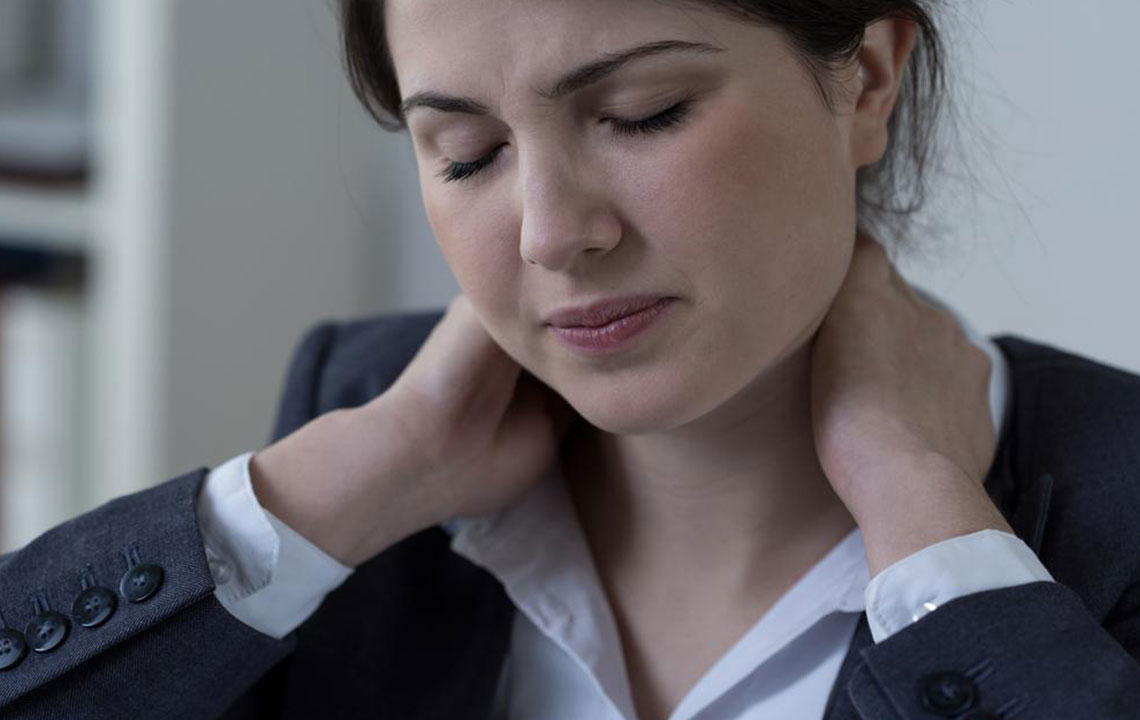Treat Swollen Lymph in Neck with These Simple Remedies

Pea-sized glands, lymph glands or nodes are present throughout the body. An integral part of the lymph system, these nodes carry lymph fluids, nutrients as well as the waste material between body tissues and bloodstream. Lymph glands are easily noticeable when they swell. People often complain of a swollen lymph node in neck, these usually swell up to the size of a marble or sometimes even bigger. Lumps can often be felt under the skin, especially the lymph glands in the neck. These glands become quite noticeable and can be easily felt when swollen. They can swell to the size of an olive or even bigger.
Part of the immune system, the lymph system is an important part of body’s defense system against diseases. They act as filters trapping viruses, bacteria and foreign substances present in the lymph fluid.Usually found singly or sometimes in groups, swollen lymph nodes are felt in the groin, neck, and underarms.
Causes of swollen lymph node in Neck
Infection, injury or tumor developing near or in the lymph node results in swelling of the lymph node. Lymph gland close to an infection swell up easily and become tender and go back to their normal size when the infection is cured. This can take up to two weeks or more to subside as the immune system fights back the infections, bacteria, etc.
Influenza (viral infection), chickenpox or infectious mononucleosis are viral and affect immunity of the whole body. Lymph glands in different parts of the body can swell up due to such infections or viral attacks. Let’s look at the following symptoms:
- Swollen lymph node in the neck is a result of tonsillitis, throat infections, common cold and tooth-related infections.
- Swollen lymph glands at the back of the head are due to scalp skin condition or lice.
- Swollen lymph node in the armpit is due to skin infection.
- Skin infections of the arm result in swelling of lymph glands in the armpit.
- Lymph glands in the groin swell due to infection in the leg or genitals.
- Swollen lymph node in the neck, behind ears, or under the jaw are a result of cold or a sore throat. It has been seen that after an injury, such as a bite or a cut leads to swelling of the lymph nodes or when an infection tumor occurs in the mouth or head
As discussed above, axillary lymph nodes or glands in the armpit swell because of an infection or injury in the arm or hand. Sometimes a rare or unusual cause of axillary swelling can be an indication of breast cancer or lymphoma.
Infection or injury in the genitals, leg or groin results in swelling of femoral or inguinal lymph nodes. In some cases, lymphoma, melanoma, and testicular cancer cause lump in the groin area.
Swelling in the glands above the collarbone swell because of tumor or infection in neck, breast, lungs, or abdomen.
Symptoms of swollen lymph nodes glands
- Lumps
- swollen, warm and red skin on lymph node
- Pain or tenderness felt while touching
- A sore throat, coughing, mouth sores, fatigue, sweating, runny nose, chills, and a fever are some of the infection symptoms that cause lymph glands to swell.
Treating Swollen Lymph Node in Neck
Treating the cause of swelling of a lymph node in the necks is very important. For instance, a bacterial infection can be treated with a five-day course of antibiotics, viral infection, on the other hand, goes away on its own. If swelling persists for a longer period, it is best advised to get a biopsy done to eliminate the risk of cancer. Therefore, get yourself checked if the swollen lymph glands don’t take their normal shape within a month.
Lymph nodes usually remain firm or swollen even after the infection has been treated. This holds true especially in case of children. Also, there are chances that even though the swollen glands will come back to its normal size, it will, for a while, remain firm and visible.
Homeopathic remedies – Homeopathy is quite effective in treating swollen nodes glands. Medicines like belladonna, Calcarea, calcarea carbonica, kali muriaticum, iodine, mercurious solubilis, ferrumphosphoricum, natrummiriaticum, silica, fluorine, bromine, and mother tincture help channel the lymphatic system and trigger an immune response. Since medicine in homeopathy is symptom-based, it is best to consult a homeopath to get the best remedy.
Herbal remedies –An herbal remedy, garlic is known for its anti-inflammatory and antibacterial properties that fight infection and backs immune system. Garlic helps in reducing inflammation and swelling. Other herbal remedies, such as ginger, olive leaf, fenugreek, peppermint, licorice root, echinacea, slippery elm, goldenseal, castor oil, cleavers, turmeric, ginger, mullein, fenugreek, and colloidal silver help in treating swollen glands.
Vitamins and minerals – Essential to building immunity and defense mechanism, minerals and vitamins help build lymphatic systems. For example, vitamin B12, vitamin C with bioflavonoids, zinc, selenium, vitamin A with carotenes, vitamin D3 (cholecalciferol), fish oil, and probiotics help in building body’s mechanism.


